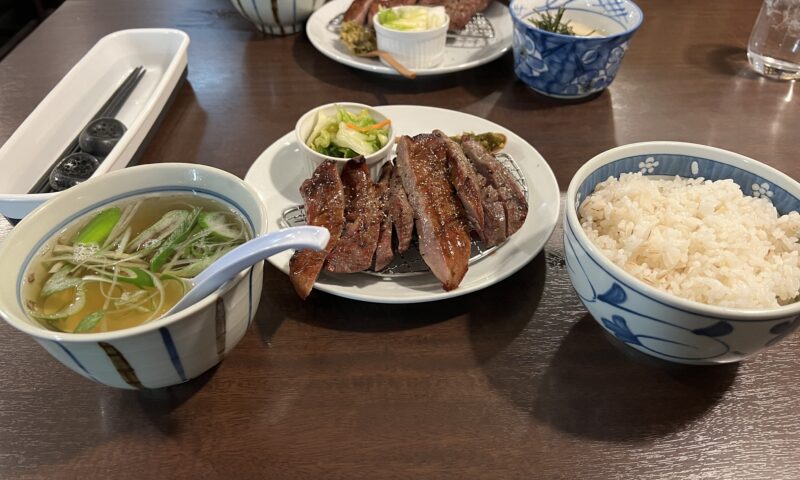- Introduction: Sendai’s Hidden Culinary Treasures
- Table of Contents
- The Historical Foundations of Sendai Cuisine
- Iconic Sendai Foods Beyond Beef Tongue
- Seasonal Specialties and Local Ingredients
- Sweet Treats and Desserts
- Sendai’s Drinking Culture
- Where to Eat: Districts and Markets
- Food Souvenirs and Gifts
- Culinary Experiences and Activities
- Dining Etiquette and Tips
- Frequently Asked Questions
- Conclusion: Embracing Sendai’s Culinary Diversity
Introduction: Sendai’s Hidden Culinary Treasures
When Japanese food enthusiasts mention Sendai, the conversation inevitably turns to gyutan (beef tongue) – the city’s most famous culinary export. While this grilled delicacy certainly deserves its stellar reputation, focusing solely on beef tongue would mean missing out on the rich tapestry of flavors that define Sendai’s diverse food culture. As the cultural and economic hub of Japan’s Tohoku region, Sendai offers a treasure trove of culinary delights that reflect its unique geography, history, and cultural heritage.
In this comprehensive guide, we’ll take you beyond beef tongue to explore the full spectrum of Sendai’s gastronomic offerings – from traditional dishes steeped in samurai history to innovative modern cuisine, from sweet treats to savory specialties, and from casual street food to high-end dining experiences. Whether you’re planning a dedicated food trip to Sendai or simply looking to enhance your itinerary with memorable meals, this guide will help you navigate the city’s diverse culinary landscape like a local.
Table of Contents
- The Historical Foundations of Sendai Cuisine
- Iconic Sendai Foods Beyond Beef Tongue
- Seasonal Specialties and Local Ingredients
- Sweet Treats and Desserts
- Sendai’s Drinking Culture
- Where to Eat: Districts and Markets
- Food Souvenirs and Gifts
- Culinary Experiences and Activities
- Dining Etiquette and Tips
- Frequently Asked Questions
<a id=”historical-foundations”></a>
The Historical Foundations of Sendai Cuisine
To understand Sendai’s unique culinary identity, we must first look at the historical factors that shaped it. Founded in 1600 by the powerful daimyo (feudal lord) Date Masamune, Sendai developed a distinctive food culture influenced by several key factors:
Samurai Cuisine and Date Family Influence
The Date clan’s preferences and needs significantly influenced local food traditions:
- Resource Management: During the Edo period (1603-1868), the Date domain promoted efficient use of ingredients, leading to dishes that maximize flavor from limited resources
- Preservation Techniques: Methods like salt-curing, smoking, and pickling became integral to Sendai cuisine
- Ceremonial Foods: Dishes originally prepared for samurai households that later influenced broader food culture
Geographical Influences
Sendai’s location between mountains and sea creates a unique culinary landscape:
- Mountain Harvests: Wild vegetables (sansai), mushrooms, and game meats
- Coastal Bounty: Fresh seafood from the Pacific Ocean and Matsushima Bay
- Fertile Plains: Rice and agricultural products from the Sendai Plain
Cultural Exchange
Sendai’s role as a regional center encouraged culinary exchange:
- Northern Influences: Techniques and ingredients from further north in Tohoku
- Southern Innovations: Adaptations of Edo (Tokyo) cuisine
- Western Integration: Early adoption of foreign culinary elements, influenced by Date Masamune’s interest in Western culture
<a id=”iconic-foods”></a>
Iconic Sendai Foods Beyond Beef Tongue
While gyutan remains Sendai’s culinary ambassador, these other local specialties deserve equal attention:
Sasakamaboko (笹かまぼこ)
These fish cakes shaped like bamboo leaves are a true Sendai icon:
- Composition: Made primarily from fresh white fish (usually Alaska pollock), formed into flat, leaf-shaped patties
- Preparation: The fish paste is molded, grilled until golden, and often enjoyed without additional seasonings
- Cultural Significance: A traditional food dating back over 120 years, sasakamaboko represents Sendai’s connection to the sea
Where to try it:
- Sasakama Honpo: Traditional shop offering freshly grilled samples
- Sanmata Sohonten: Family-run business with factory tours available
- Oizen: Convenient location inside Sendai Station
Zunda Mochi (ずんだ餅)
This bright green sweet treat has become synonymous with Sendai:
- Composition: Sweet mochi (pounded rice cakes) topped with zunda, a paste made from mashed edamame (green soybeans)
- Flavor Profile: Earthy sweetness with natural green soybean flavors
- Cultural Context: Originally a seasonal harvest food that has evolved into a year-round specialty
Where to try it:
- Mitsukoshi Department Store basement food floor
- Zunda Saryo in S-PAL shopping center
- Zunda Shake at Sendai Station for a modern interpretation
Seri Nabe (せり鍋)
This warming hotpot showcases local winter ingredients:
- Key Components: Water dropwort (seri), locally raised chicken, tofu, and seasonal vegetables
- Preparation: Ingredients are simmered together in a light, flavorful broth
- Seasonality: Particularly popular during winter months
Where to try it:
- Sendai Robata: Traditional restaurant specializing in local cuisine
- Shiogama Shoten: Known for exceptional seafood and seasonal nabe
- Hasamiya: Family-style restaurant with reasonable prices
Hittsumi (ひっつみ)
This rustic dish represents home cooking in the Tohoku region:
- Composition: Flat, dough dumplings simmered with chicken and local vegetables
- Regional Variations: Sendai’s version often includes more seafood elements
- Cultural Significance: Originally a hearty farmer’s meal designed to be filling and nutritious
Where to try it:
- Sendai Bunka Yokocho restaurant arcade
- Murakamiya: Restaurant specializing in traditional Tohoku cuisine
- Sendai Sanchoku Market: Casual dining hall with authentic local dishes
Ichigo-ni (苺煮)
Despite its name (which translates to “strawberry stew”), this dish contains no strawberries:
- Composition: Sea urchin and abalone simmered in a light dashi broth
- Origin: Fishermen’s dish from the Matsushima area
- Name Origin: The sea urchin pieces resemble strawberries floating in the broth
Where to try it:
- Matsushima Bay restaurants, particularly those near the harbor
- Shokatsukan: Historic restaurant with excellent seafood dishes
- Kanrantei: Tea house offering ichigo-ni with spectacular views of Matsushima Bay
<a id=”seasonal-specialties”></a>
Seasonal Specialties and Local Ingredients
Sendai’s cuisine follows the Japanese tradition of emphasizing seasonality. Here’s what to look for throughout the year:
Spring Delicacies (March-May)
- Hatsuna (初菜): Early spring vegetables from the mountain foothills
- Nanohana (菜の花): Rapeseed flowers, often blanched and dressed with soy sauce
- Hotaru-ika (蛍烏賊): Firefly squid preparations, showcasing this spring delicacy
- Bamboo Shoots: Often featured in spring meals, harvested from the surrounding mountains
Summer Flavors (June-August)
- Sendai Tomatoes: Known for their perfect balance of sweetness and acidity
- Hiyashi Chuka (冷やし中華): Cold ramen noodles, a Sendai summer specialty
- Unagi (鰻): Grilled freshwater eel, traditionally consumed during the hottest days
- Edamame (枝豆): Fresh soybeans at peak season, served as snacks or used for zunda
Autumn Harvest (September-November)
- Matsutake (松茸): Prized mushrooms from nearby forests
- Sanma (秋刀魚): Pacific saury, often grilled simply with salt
- Shinmai (新米): Newly harvested rice from the Sendai Plain
- Kaki (柿): Persimmons from orchards in the surrounding hillsides
Winter Warmers (December-February)
- Oysters: Particularly those from Matsushima Bay
- Anglerfish Nabe (あんこう鍋): Hotpot featuring this winter fish delicacy
- Kiritanpo (きりたんぽ): Pounded rice formed around skewers and grilled
- Yukiwari Nabe (雪割鍋): “Snow-breaking” hotpot with local miso and seasonal ingredients
Local Agricultural Products
Several ingredients from the region are particularly noteworthy:
- Sendai Miso: Darker and more robust than other regional varieties
- Sendai Rice: Particularly varieties grown in the fertile Sendai Plain
- Miyagi Salmon: Farm-raised in the clean waters off the coast
- Sendai Negi (仙台ねぎ): Local green onion variety known for its sweet flavor
<a id=”sweet-treats”></a>
Sweet Treats and Desserts
Sendai offers a remarkable array of traditional and innovative sweets:
Traditional Wagashi (Japanese Sweets)
- Kurikinton (栗きんとん): Sweetened chestnuts, often given as gifts
- Hagi no Tsuki (萩の月): Sponge cake filled with custard cream, named after the autumn moon
- Maboroshi no Kashi (幻の菓子): “Phantom sweet” with white bean paste and mochi
- Shiso Daifuku (紫蘇大福): Mochi with sweet bean paste, wrapped in shiso leaf
Modern Sweet Innovations
- Zunda Shake: Modern beverage interpretation of the traditional zunda flavor
- Gyutan Caramel: Sweet caramel candy infused with subtle beef tongue flavor (a novelty item)
- Date Masamune Cookies: Helmet-shaped cookies inspired by Sendai’s founder
- Sendai Cheesecake: Local take on Western cheesecake, often incorporating regional ingredients
Best Sweet Shops and Cafes
- Kasho Sanzen (菓匠三全): Historic confectionery specializing in traditional wagashi
- Hiyoriyama Sweets Terrace: Collection of cafes with panoramic city views
- Mori no Ichi Cafe: Contemporary cafe featuring seasonal ingredients in their desserts
- Fujiya Honten: Traditional Japanese sweets maker founded in the Meiji era
<a id=”drinking-culture”></a>
Sendai’s Drinking Culture
The liquid side of Sendai’s food culture is equally rich and diverse:
Local Sake (Rice Wine)
Miyagi Prefecture is home to several celebrated sake breweries:
- Urakasumi (浦霞): One of the region’s most famous breweries, known for dry, clean flavors
- Ichinokura (一ノ蔵): Award-winning brewery producing sake that pairs well with local cuisine
- Katsuyama (勝山): Historic brewery once patronized by the Date clan
- Seasonal Considerations: Look for namazake (unpasteurized sake) in spring and hiyaoroshi (autumn-released sake) in fall
Beer and Craft Brewing
- Sendai Beer Factory: Local craft brewery with distinctive regional flavors
- Tohoku Brewing: Creating beers inspired by local ingredients and traditions
- Kirin Beer Factory: Major brewery with tours available
Whisky and Spirits
- Nikka Whisky Sendai Factory: Historic distillery founded by Masataka Taketsuru, the father of Japanese whisky
- Local Fruit Liqueurs: Seasonal spirits made with Miyagi apples, cherries, and other fruits
Where to Drink
- Kokubuncho: Sendai’s entertainment district, packed with bars and izakayas
- Sunmall Ichibancho: Shopping arcade with numerous casual drinking establishments
- Iroha Yokocho: Narrow alley lined with small, authentic bars
<a id=”where-to-eat”></a>
Where to Eat: Districts and Markets
Major Food Districts
- Aoba-dori Avenue: High-end and mid-range restaurants in central Sendai
- Kokubuncho: Entertainment district with numerous izakayas and casual eateries
- Ichibancho Shopping Arcade: Covered shopping street with diverse dining options
- Sendai Station Area: Convenient concentration of restaurants, from fast food to fine dining
Food Markets and Halls
- Sendai Asaichi (Morning Market): Fresh produce, seafood, and prepared foods
- Sendai Station Food Floors: Both the S-PAL shopping center and the station building have excellent food courts
- Sendai Yatai Mura: Collection of food stalls serving local specialties
- Sendai Sanchoku Market: Direct-from-producer market with attached dining hall
Hidden Gems
- Bunka Yokocho: Alley of small restaurants specializing in traditional local cuisine
- Iroha Yokocho: Historic alley near Sendai Station with retro atmosphere and local food
- Kitayama Area: Residential district with excellent neighborhood restaurants
- Oroshimachi Market Area: Wholesale district with authentic worker’s eateries
<a id=”food-souvenirs”></a>
Food Souvenirs and Gifts
Sendai offers numerous food products perfect for bringing home:
Shelf-Stable Souvenirs
- Sasakamaboko: Vacuum-packed fish cakes that last several weeks
- Zunda Products: Including zunda beans, paste, and sweets
- Hirako Miso: Local miso with distinctive flavor
- Hagi no Tsuki: Sponge cake souvenirs with extended shelf life
Premium Food Gifts
- Sendai Beef: High-quality beef can be shipped domestically within Japan
- Gourmet Gift Sets: Curated selections of local specialties
- Artisanal Sake: Bottles from local breweries
- Seasonal Sweet Boxes: Traditional wagashi in elegant packaging
Where to Shop for Food Souvenirs
- Sendai Station Omiyage Floors: Convenient one-stop shopping
- Department Store Basement Food Halls: Including Fujisaki and Mitsukoshi
- Specialty Food Shops in Sunmall Ichibancho
- Direct from Producers: Some factories offer factory-direct shopping
<a id=”culinary-experiences”></a>
Culinary Experiences and Activities
Immerse yourself in Sendai’s food culture through these hands-on activities:
Cooking Classes
- Date Cooking Studio: Learn to prepare local specialties in English-friendly classes
- Miyagi Cooking School: Traditional Japanese cooking with focus on Sendai specialties
- Zunda Making Workshops: Seasonal classes teaching the art of zunda preparation
Food Tours
- Sendai Gourmet Walking Tour: 3-hour guided exploration of local specialties
- Sake Brewery Tours: Visit local sake producers in the surrounding areas
- Matsushima Seafood Experience: Combine sightseeing with seafood sampling
Seasonal Food Festivals
- Sendai Tanabata Food Fair (August): Special menus throughout the city during the famous festival
- Sendai Autumn Food Festival (October): Celebrating harvest season
- Jozenji Street Jazz Festival Food Stalls (September): Combining music and local cuisine
- Winter Illumination Food Markets (December): Seasonal treats during the Pageant of Starlight
Farm and Producer Visits
- Fruit Picking: Seasonal experiences at farms surrounding Sendai
- Miso Factory Tours: Learn about traditional miso production
- Fisheries Experiences: Particularly around Matsushima Bay
<a id=”dining-etiquette”></a>
Dining Etiquette and Tips
Practical Tips for Dining in Sendai
- Reservations: Recommended for popular restaurants, especially on weekends
- Peak Hours: Typically 12:00-13:30 for lunch and 18:00-20:00 for dinner
- Tipping: Not customary in Japan; simply pay the amount on your bill
- Tax: Consumption tax (10%) is usually included in menu prices
Language Assistance
Useful phrases for ordering food in Sendai:
- “Osusume wa nan desu ka?” (What do you recommend?)
- “Sendai no meibutsu wa arimasu ka?” (Do you have Sendai specialties?)
- “Eigo no menu arimasu ka?” (Do you have an English menu?)
- “Kore o kudasai” (This, please) – pointing at menu items is perfectly acceptable
Dietary Restrictions
- Vegetarian Options: Can be limited but look for Buddhist temple cuisine (shojin ryori)
- Halal Food: A small but growing number of establishments offer halal options
- Allergies: Carry an allergy card in Japanese explaining your specific restrictions
<a id=”faq”></a>
Frequently Asked Questions
General Food Questions
Q: What is Sendai’s most famous food besides beef tongue? A: While beef tongue (gyutan) remains the most iconic, sasakamaboko (fish cakes) and zunda mochi (green soybean mochi) are equally representative of Sendai’s food culture.
Q: When is the best food season to visit Sendai? A: Each season offers unique culinary experiences, but autumn (September-November) is particularly special with harvest foods, mushrooms, and seafood all at their peak. Winter is excellent for hotpot dishes and oysters.
Q: Are there good options for breakfast in Sendai? A: Traditional Japanese breakfasts are available at hotels and some restaurants. For casual options, try the morning sets at coffee shops like Komeda’s Coffee or explore the Asaichi morning market for fresh food.
Dining Practicalities
Q: How expensive is dining in Sendai compared to Tokyo? A: Sendai offers excellent value, with meals typically costing 20-30% less than equivalent dining experiences in Tokyo. A good meal can range from ¥1,000-1,500 for lunch to ¥3,000-5,000 for dinner.
Q: Do restaurants in Sendai typically accept credit cards? A: While major restaurants and those in tourist areas usually accept credit cards, it’s advisable to carry cash, especially for smaller establishments and traditional eateries.
Q: Is English widely spoken in Sendai restaurants? A: English language support varies widely. Major tourist areas and higher-end restaurants often offer English menus, while neighborhood establishments may have limited English capabilities. Picture menus are common and helpful.
Specific Food Experiences
Q: Where can I try authentic zunda mochi? A: For traditional zunda mochi, visit Mitsukoshi Department Store’s basement food floor or specialty shops like Zunda Saryo. For modern interpretations, try the Zunda Shake at stands throughout the city.
Q: Can I visit sake breweries near Sendai? A: Yes, several sake breweries within an hour of Sendai offer tours and tastings, including Urakasumi, Ichinokura, and Katsuyama. Many require advance reservations, especially for English-language tours.
Q: What food experience should not be missed in Sendai? A: Besides trying gyutan, don’t miss visiting a traditional sasakamaboko shop to see the fish cakes being made and grilled fresh. Also, experiencing a full seafood meal featuring the bounty of Matsushima Bay provides insight into the region’s culinary identity.
Conclusion: Embracing Sendai’s Culinary Diversity
Sendai’s food scene represents a perfect blend of tradition and innovation, reflecting both the samurai heritage of the Date clan and the natural bounty of the Tohoku region. While beef tongue may have put Sendai on the culinary map, the city’s gastronomic landscape offers so much more to discover – from delicate seafood preparations to hearty mountain fare, from ancient preservation techniques to modern interpretations of classic flavors.
As you explore Sendai, let your culinary adventures extend beyond the famous gyutan restaurants. Venture into neighborhood eateries, seasonal festivals, traditional markets, and local producers to experience the full spectrum of flavors that make this city a hidden treasure for food enthusiasts. Whether you’re sampling the zunda mochi that symbolizes the region’s agricultural heritage or savoring fresh seafood from Matsushima Bay, each bite tells a story about Sendai’s history, geography, and culture.
By embracing the full diversity of Sendai’s food culture, visitors gain not just memorable meals but a deeper understanding of this remarkable city – a place where culinary traditions have been carefully preserved while continuing to evolve with each generation of chefs and food artisans.


